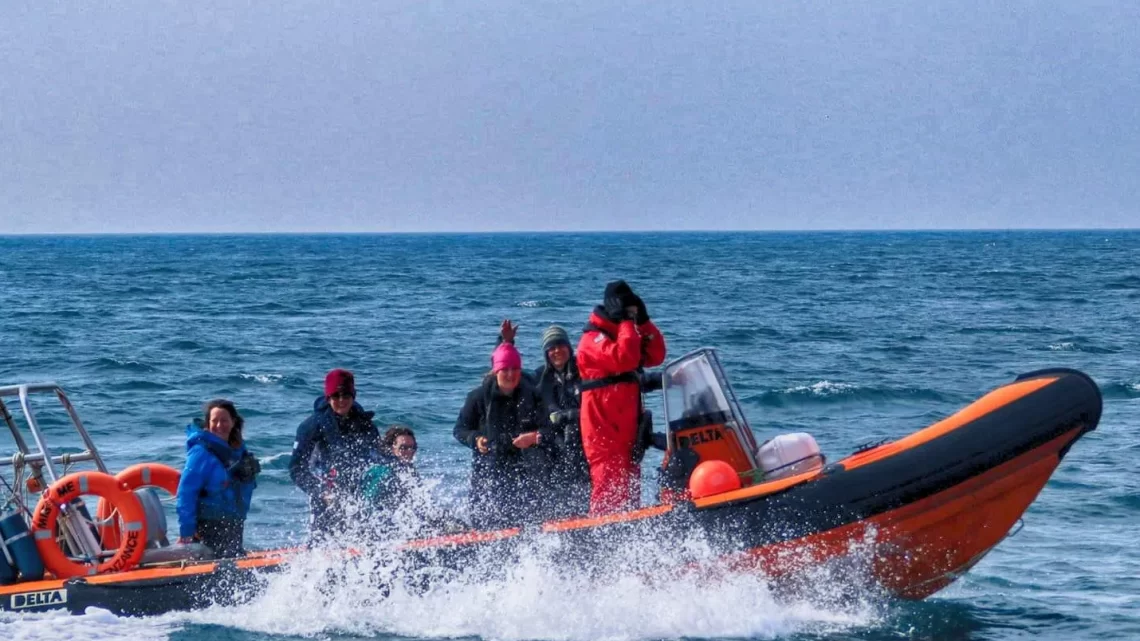
Wildlife Watching Boat Trips
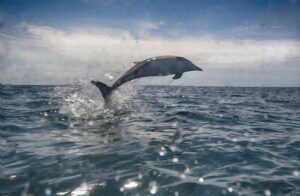
Our wildlife watching boat trips venture along the dramatic Mounts Bay coast and out into the deep waters of the bay onboard ‘Mis Me’, our 7-metre RIB, with a maximum capacity of seven passenger the tours offer an intermate experience.
With a 360° view you’ll have the best chance of spotting dolphins, it’s always a thrill when they come and join us for a bow ride. Harbour porpoises, minke and fin whales are often spotted in the bay and seals can been seen hauled out resting on the rocks or bobbing close to shore.
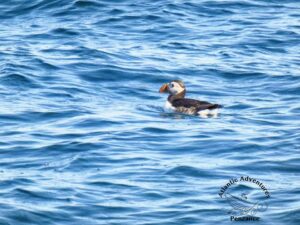
A variety of sea birds including gannets, shearwaters, storm petrels, fulmars and if we’re lucky, puffins can be seen.
Other visitors include humpback whales, basking sharks and the weird but wonderful ocean sunfish.
2-Hour Wildlife Watching Boat Trip: Typical Itinerary
Leaving from the historic harbour of Penzance, we head a short distance along Mounts Bay to the Islet of St Clements, just offshore from the picturesque village of Mousehole. Here we often see Atlantic Grey Seals hauled out to rest after long feeding forays or bobbing about in the water.
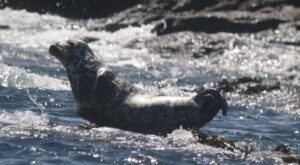
On route we pass the old Penlee Lifeboat Station, home of the ill fated Solomon Browne, which went to the aid of the Union Star in stormy seas on 19th December 1981. After the lifeboat had rescued four people, both vessels were lost with all hands. Sixteen people died, including eight volunteer lifeboatmen. This tragic loss still weighs heavy with many and we always give our respects as we pass.
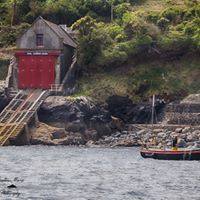
From St Clements we head due south out into the heart of Mounts Bay, in search of the fantastic wildlife the bay has to offer.
Deep out in the bay we pass over an area called the Epson Shoal. Here the seabed dramatically rises from sixty meters to under thirty. The effect of the tide passing over this reef causes the currents to rise from the depths bringing nutrients with them, making it a prime spot for fish to feed. So, in turn, this can be a good spot to find dolphins and harbour porpoise and even whales.
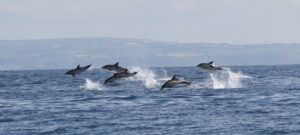
Heading back toward land from here we pass by the Runnel Stone Reef. This area is one of only fifty Marine Conservation Zones in England. The reef’s exposed position means it feels the full effect of the Atlantic Ocean, making it rich in diversity of marine life.
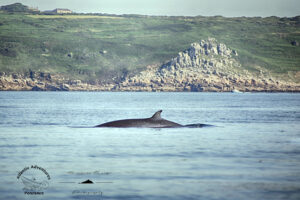
Just on the edge of the reef is the quiet hamlet of Porthgwara, which was once a small fishing community. This is a well sheltered and tranquil spot, where the waters are often gin-clear and sand eels can be seen darting though the water. It has also been used in the filming of the Poldark TV series.
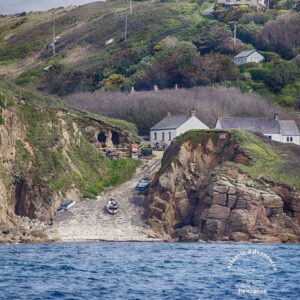
Heading back along the coast we can see evidence of the ancient field systems on the rolling cliffs, and then we pass Porthcurno and the Minack Theatre. The famous outdoor theatre was built in the 1930s by one lady, Rowena Cade, and her gardener, Billy Rawlin. From the sea you can appreciate what a true feat this was. The beach at Porthcurno is now popular with both locals and tourists, but in the mid to late 1800s it was where dozens of telegraph cables trenched under the beach and out to sea, helping to connect Britain with the rest of the world.
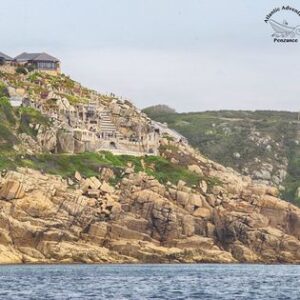
Cruising further north, we come to the pretty village of Penberth. Once a thriving pilchard fishing community, it’s now owned and managed by the National Trust. At the top of the granite block slipway you can see the restored capstan winch, once used to haul the boats up the slipway.
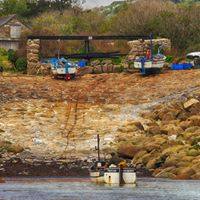
Passing Tater Du lighthouse, we then come to Lamorna Cove. This was an industrial area in its day, with granite being mined by hand from the cliffs, loaded onto the ships and transported around the world. Its beauty has now made it a home for many artists.
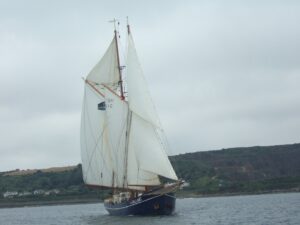
Our final leg takes us back past Mousehole and on to Penzance.
Don’t be surprised if we stop along the way to pick up marine litter,
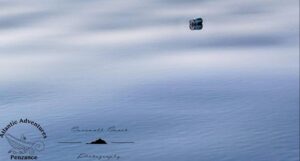
all the team at Atlantic Adventures are ardent conservationists. We all volunteer for both British Divers Marine Life Rescue, doing our best to help injured and poorly marine wildlife and for Cornwall Wild Life Trust, recording stranded wildlife. We unfortunately all to often get to see the devastating effect marine litter has on our wildlife.
This poor little guy had fishing line around its neck.
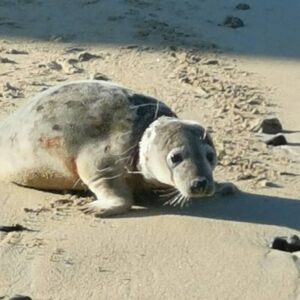
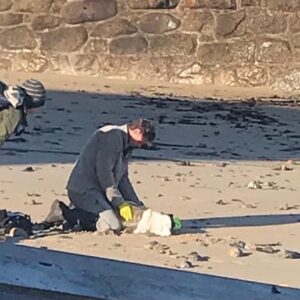
3-Hour Wildlife Watching Boat Trip: Typical Itinerary
Our three-hour tour follows the same format as our two-hour trip up to the Epsom Shoal. From there we venture across to the edge of the bay and towards Longships lighthouse. The first lighthouse was built in the late 1700’s. The one we see today was built in 1875 and stands at a height of 35 metres. It protects mariners from a lethal set of rocks, that have taken many a ship to their final resting place over the years.
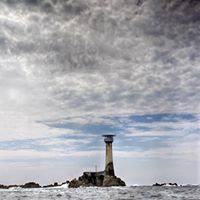
From Longships we head under the cliffs of Land’s End to view the final resting place of cargo ship Malheim. In the early hours of 23rd March 2003 the officer on watch is said to have slipped in the bridge and fallen unconscious. When he came to, the ship was bearing down on the cliffs and it was too late to overt the disaster. The ship can now be seen on the cliff line.
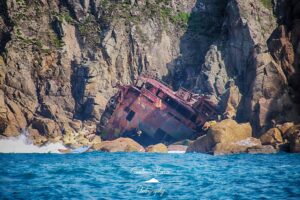
We round Land’s End and head back into Mounts Bay, taking in the spectacular high cliffs. The first bay we come to is Mill Bay or Nanjizal, this is a truly stunning wide bay, with the white sand below, the waters here can be amazingly clear. With no easy access from the land, the bay is often deserted. To the side of the cove is a granite arch known as ‘Salty Song’, through which you can see to the beach behind.
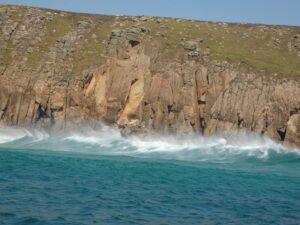
From Mill Bay we head around Gwennap head and into Porthgwarra cove and continue as per our two-hour tour.
2-Hour Tour: £40 per person
3-Hour Tour: £55 per person
Maximum 9 passengers per tour
Minimum age 7
We also have gift vouchers available for that special present.